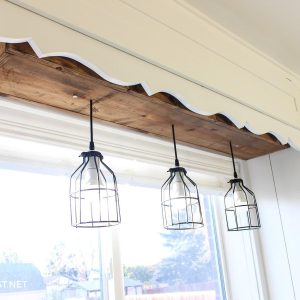
Illuminate Your Space: A Guide to Perfect Bathroom Lighting
Proper bathroom lighting is often overlooked when it comes to designing and renovating bathrooms. However, it plays a crucial role in creating a safe, functional, and aesthetically pleasing space. From providing adequate lighting for tasks such as shaving and applying makeup to creating a relaxing ambiance for a soak in the tub, the right lighting can make all the difference in your bathroom. In this article, we will explore the importance of proper bathroom lighting and provide tips and ideas for achieving it.
Key Takeaways
- Proper bathroom lighting is important for both functionality and aesthetics.
- There are various types of lighting fixtures to choose from, including ceiling lights, wall sconces, and recessed lighting.
- When choosing bulbs for your bathroom lighting, consider the color temperature and brightness level.
- A balanced lighting plan for your bathroom should include ambient, task, and accent lighting.
- Layering your bathroom lighting can create a more dynamic and visually appealing space.
Understanding the Importance of Proper Bathroom Lighting
Proper bathroom lighting is essential for several reasons. First and foremost, it is crucial for safety. Bathrooms are high-risk areas where accidents can easily occur, especially in low-light conditions. Adequate lighting can help prevent slips, trips, and falls by illuminating potential hazards such as wet floors or obstacles. It is especially important to have good lighting around the vanity area, where tasks such as shaving or applying makeup require clear visibility.
Functionality is another key aspect of proper bathroom lighting. Different activities require different levels of lighting. For example, bright task lighting is needed for grooming tasks, while softer ambient lighting can create a relaxing atmosphere for a bath or shower. Having the ability to adjust the lighting levels in your bathroom can greatly enhance its functionality.
Lastly, proper bathroom lighting contributes to the overall aesthetics of the space. Well-designed lighting can highlight architectural features, create focal points, and set the mood for the room. Whether you prefer a bright and modern look or a warm and cozy ambiance, the right lighting can help you achieve your desired aesthetic.
Types of Lighting Fixtures for Your Bathroom
There are several types of lighting fixtures that can be used in bathrooms to achieve proper lighting. Ceiling lights are a common choice for providing general illumination in the room. They come in various styles, including flush mount fixtures that sit close to the ceiling and semi-flush mount fixtures that hang slightly lower. Recessed lights are another popular option for ceiling lighting, as they provide a clean and modern look.
Wall sconces are a great choice for adding both ambient and task lighting to your bathroom. They can be installed on either side of the vanity mirror to eliminate shadows and provide even lighting for grooming tasks. Wall sconces also come in a variety of styles, making it easy to find one that complements your bathroom decor.
Vanity lights are specifically designed for illuminating the vanity area. They are typically installed above the mirror and come in various configurations, such as single sconces, multi-light fixtures, or strip lights. Vanity lights should be positioned at eye level to minimize shadows on the face and provide even lighting for tasks like applying makeup or shaving.
Choosing the Right Bulbs for Your Bathroom Lighting
| Bulb Type | Wattage | Color Temperature | Lumens | Dimmable |
|---|---|---|---|---|
| LED | 9-12W | 2700-3000K | 800-1000lm | Yes |
| Halogen | 40-60W | 2800-3200K | 500-700lm | Yes |
| Incandescent | 40-60W | 2700K | 400-600lm | No |
Selecting the right bulbs for your bathroom lighting is just as important as choosing the right fixtures. When it comes to brightness, it is recommended to use bulbs with a high lumen output to ensure adequate illumination. The color temperature of the bulbs is also crucial, as it can greatly affect the overall ambiance of the room. Warm white bulbs (around 2700-3000 Kelvin) create a cozy and inviting atmosphere, while cool white bulbs (around 4000-5000 Kelvin) provide a brighter and more energizing light.
Energy efficiency is another factor to consider when choosing bulbs for your bathroom lighting. LED bulbs are a popular choice due to their long lifespan and low energy consumption. They are more expensive upfront but can save you money in the long run by reducing your energy bills and the frequency of bulb replacements.
How to Create a Balanced Lighting Plan for Your Bathroom
Creating a balanced lighting plan is essential for achieving proper bathroom lighting. This involves layering different types of lighting and zoning them according to their function. Layering refers to the use of multiple light sources at different levels to create depth and dimension in the room. Zoning involves dividing the bathroom into different areas and providing specific lighting for each zone.
To create a balanced lighting plan, start by identifying the different zones in your bathroom, such as the vanity area, shower area, and bathtub area. Then, determine the type of lighting needed for each zone. For example, the vanity area requires task lighting, while the shower area may benefit from waterproof fixtures. Once you have identified the lighting needs for each zone, you can start selecting the appropriate fixtures and bulbs.
Layering Your Bathroom Lighting for Maximum Effect

Layering your bathroom lighting involves using a combination of ambient, task, and accent lighting to create a visually appealing and functional space. Ambient lighting provides overall illumination for the room and can be achieved through ceiling lights or recessed lights. Task lighting is focused lighting that is used for specific tasks such as grooming or reading. Vanity lights and wall sconces are commonly used for task lighting in bathrooms. Accent lighting is used to highlight architectural features or decorative elements in the room. This can be achieved through the use of wall sconces or recessed lights.
To achieve maximum effect with layered lighting, it is important to consider the placement and direction of the light sources. For example, placing wall sconces on either side of the vanity mirror will provide even lighting for grooming tasks and minimize shadows on the face. Recessed lights can be used to highlight artwork or architectural features in the room. By strategically placing and directing the light sources, you can create a visually appealing and functional bathroom.
Tips for Lighting Your Vanity Area
The vanity area is one of the most important areas in the bathroom when it comes to proper lighting. It is where tasks such as shaving, applying makeup, and grooming take place, so it is crucial to have adequate and even lighting in this area. Here are some tips for lighting your vanity area:
– Avoid placing a single light fixture above the mirror, as it can create unflattering shadows on the face. Instead, opt for multiple light sources on either side of the mirror to provide even lighting.
– If space allows, consider installing a lighted mirror or a mirror with built-in lights. This can provide even lighting and eliminate the need for additional fixtures.
– Choose bulbs with a high color rendering index (CRI) to ensure accurate color representation in the mirror. A CRI of 90 or above is recommended for vanity lighting.
– Consider installing dimmer switches for your vanity lights. This will allow you to adjust the lighting levels according to your needs and create a more relaxing ambiance when desired.
Lighting Your Shower and Bathtub Areas
Proper lighting in the shower and bathtub areas is important for both safety and functionality. Waterproof fixtures are essential in these areas to prevent electrical hazards. Here are some tips for lighting your shower and bathtub areas:
– Install recessed lights or waterproof fixtures in the ceiling above the shower or bathtub. These fixtures should be rated for wet locations to ensure safety.
– Consider installing a dimmer switch for the shower and bathtub area. This will allow you to adjust the lighting levels according to your needs and create a more relaxing ambiance when desired.
– If you have a glass shower enclosure, consider installing LED strip lights along the edges to create a dramatic effect.
– Use frosted or textured glass fixtures in the shower area to diffuse the light and prevent glare.
Incorporating Natural Light into Your Bathroom Design
Incorporating natural light into your bathroom design can greatly enhance its overall look and feel. Natural light not only provides a sense of openness and spaciousness but also offers numerous health benefits, such as boosting mood and improving sleep quality. Here are some ideas for incorporating natural light into your bathroom design:
– Install skylights or roof windows to bring in natural light from above. This can create a bright and airy atmosphere in the bathroom.
– If privacy is a concern, consider using frosted or textured glass for windows or skylights. This will allow natural light to enter while maintaining privacy.
– If your bathroom is located on an exterior wall, consider installing larger windows to maximize natural light. You can also use window treatments such as blinds or curtains to control the amount of light entering the room.
Energy-Efficient Bathroom Lighting Options
Energy efficiency is an important consideration when it comes to bathroom lighting. Not only does it help reduce your energy bills, but it also contributes to a more sustainable and environmentally friendly home. Here are some energy-efficient bathroom lighting options:
– LED bulbs: LED bulbs are highly energy-efficient and have a long lifespan. They consume significantly less energy than traditional incandescent bulbs and produce less heat.
– Motion sensor lights: Installing motion sensor lights in your bathroom can help save energy by automatically turning off the lights when the room is not in use.
– Timer switches: Timer switches can be used to automatically turn off the lights after a certain period of time. This is especially useful for bathrooms used by children who may forget to turn off the lights.
Maintaining Your Bathroom Lighting Fixtures and Bulbs
Proper maintenance of your bathroom lighting fixtures and bulbs is essential for ensuring their longevity and optimal performance. Here are some tips for maintaining your bathroom lighting:
– Regularly clean your fixtures to remove dust and dirt buildup. Use a soft cloth or sponge and mild soap to clean the fixtures, avoiding abrasive cleaners that can damage the finish.
– Replace burnt-out bulbs promptly to ensure adequate lighting in your bathroom. Keep spare bulbs on hand so that you can replace them as needed.
– Check for loose connections or damaged wiring regularly. If you notice any issues, it is best to consult a professional electrician for repairs.
– Consider scheduling an annual inspection of your bathroom lighting by a qualified electrician. They can check for any potential issues and ensure that your lighting is safe and up to code.
Proper bathroom lighting is essential for creating a safe, functional, and aesthetically pleasing space. By understanding the importance of proper bathroom lighting and selecting the right fixtures and bulbs, you can achieve the desired lighting levels and ambiance in your bathroom. Whether you prefer a bright and modern look or a warm and cozy atmosphere, there are plenty of options available to suit your needs. Remember to consider factors such as brightness, color temperature, energy efficiency, and maintenance when choosing your bathroom lighting. With the right lighting plan in place, you can transform your bathroom into a beautiful and functional space.
If you’re looking to upgrade your bathroom lighting, you may also be interested in learning about the latest trends in modern design. Check out this article on “Modern Design Trends” for some inspiration and ideas on how to create a stylish and functional bathroom space. From sleek fixtures to innovative lighting solutions, this article covers it all. So why not take your bathroom lighting to the next level and explore the possibilities of modern design? Read more here.


